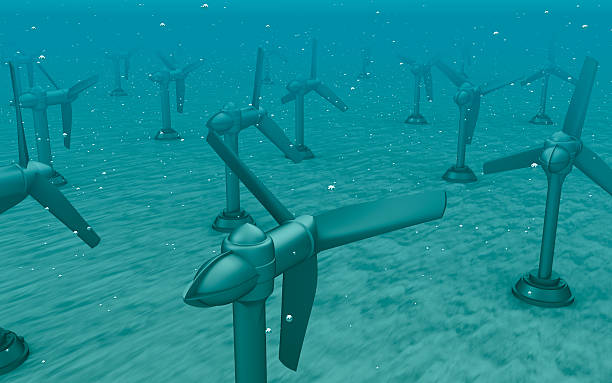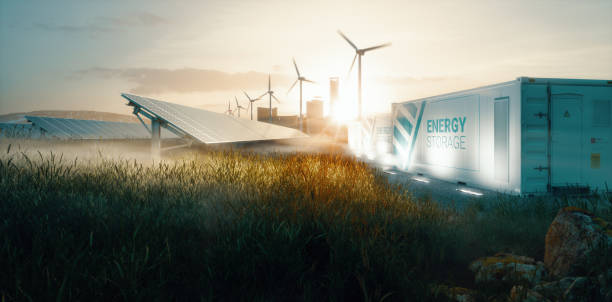The Future of Renewable Energy: Emerging Technologies and Trends to Watch
As the world becomes increasingly aware of the need to reduce our reliance on fossil fuels and mitigate the effects of climate change, the renewable energy sector is experiencing explosive growth and innovation. From advances in solar and wind power to cutting-edge technologies like tidal energy and biofuels, the future of renewable energy is looking brighter than ever before. In this article, we'll explore some of the most exciting emerging technologies and trends that are shaping the future of this critical industry.
The Solar Revolution Continues
While solar power has been around for decades, recent advancements in photovoltaic (PV) technology and energy storage solutions have made it more accessible and efficient than ever before.
Here are some of the key trends to watch in the solar energy space:
- Perovskite Solar Cells: These innovative solar cells are made from perovskite compounds and have the potential to be more efficient and cost-effective than traditional silicon-based cells.
- Building-Integrated Photovoltaics (BIPV): BIPV systems seamlessly integrate solar panels into the design of buildings, turning roofs, walls, and windows into energy-generating surfaces.
- Solar Concentrators: These systems use lenses or mirrors to concentrate sunlight onto highly efficient solar cells, reducing the amount of expensive PV material required.
Harnessing the Power of the Wind
Wind energy has been a major player in the renewable energy sector for years, and new technologies are making it even more powerful and efficient:
- Floating Offshore Wind Turbines: These innovative turbines are designed to operate in deep offshore waters, opening up new areas for wind energy generation.
- Larger and More Efficient Turbines: As turbine technology advances, we're seeing the development of larger and more efficient turbines that can generate more power from the same amount of wind.
- Vertical Axis Wind Turbines (VAWTs): Unlike traditional horizontal axis turbines, VAWTs can capture wind from any direction, making them more suitable for urban and residential areas.
Tidal and Wave Energy:
Untapped Potential While still in the early stages of development, tidal and wave energy technologies offer a promising source of renewable energy by harnessing the power of the ocean:
- Tidal Stream Generators: These systems use underwater turbines to capture the kinetic energy of tidal currents and convert it into electricity.
- Wave Energy Converters: These devices are designed to capture the energy from ocean waves and convert it into usable electricity through a variety of mechanisms, such as oscillating water columns or attenuators.
The Promise of Biofuels and Waste-to-Energy
In addition to renewable electricity generation, there's also a growing focus on producing renewable fuels and energy from organic materials:
- Advanced Biofuels: Next-generation biofuels made from non-food sources like algae, agricultural waste, and municipal solid waste offer a more sustainable alternative to fossil fuels.
- Waste-to-Energy: Technologies that convert waste materials into energy, such as anaerobic digestion and thermal conversion, are becoming increasingly common as a way to reduce landfill waste and generate renewable energy.
Overcoming Energy Storage Challenges
One of the biggest challenges facing the renewable energy sector is the intermittent nature of sources like solar and wind. To address this, researchers and engineers are working on innovative energy storage solutions:
- Advanced Battery Technologies: From lithium-ion to flow batteries, the development of more efficient and cost-effective battery storage systems is critical for storing excess renewable energy.
- Hydrogen Energy Storage: Hydrogen can be produced from renewable sources and stored for later use in fuel cells or combustion engines, providing a clean and versatile energy storage solution.
- Thermal Energy Storage: Systems that store energy in the form of heat, such as molten salt or phase-change materials, can help balance the supply and demand of renewable energy.

As you can see, the future of renewable energy is brimming with exciting possibilities. From cutting-edge solar and wind technologies to innovative solutions for harnessing the power of the ocean and organic materials, the renewable energy landscape is rapidly evolving. And with continued research and investment into energy storage solutions, the dream of a fully sustainable, carbon-neutral energy system is becoming increasingly achievable. It's an exhilarating time for the renewable energy sector, and the trends and technologies emerging today will shape the way we power our world for generations to come.
































